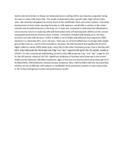Evaluation of early calves' weaning diet as milk replacer for smallholder dairy production systems in Kenya.

Date
2014Author
Syomiti, M
Bauni, M
Kariuki, IW
Wamae, DK
Gachuiri, C
Mutua, S
Malala, D
Language
enMetadata
Show full item recordAbstract
Small-scale dairy farmers in Kenya are interested more in selling milk to earn income, especially during dry seasons when milk prices hike. This results in depressed calves' growth rates, high calf mortality rates, late maturity and general economic losses in the smallholder dairy production systems. Innovative development of early calves weaning formulae, as milk replacers, would offer a solution in the calves' nutrition and household income in the long run. A study was conducted to determine the effectiveness and economic returns to replacing milk with formulated early calf weaning diets (EWDs) on the survival and general performance of dairy calves in Kenya. Treatments included milk feeding up to 105 days (Control) and with milk (28 days) + EWD, fortified or not fortified with effective microorganisms (EM), diamond-V or Diatomite (DT), up to 105 days. There was no (P>0.05) differences in average daily weight gain of the calves as a result of the treatments. However, the EM-treatment had significantly (P<0.01) higher calve dry matter (DM) intake (g kg-1 day) than in the other treatment groups. Due to feeding with EWD, total milk saved for the farmer was 9 kg-1cow-1 day-1; equal to 945 kg for the 105 period, valued at US$614. For the conventional milk feeding (control), total milk saved was 5 kg-1 cow-1 day-1; equal to 525 for the 105 period, valued at US$ 341. Significant incidences of diarrhea were observed in the control (milk) and the Diamond-V fortified treatments. Signs of hair loss and discolorations were observed in DT-fortified EWDs. EM-fortification reduced disease incidences, thus, EWD fortified with this microbial feed additive can be an effective milk-replacer in smallholder dairy production systems to wean dairy calves at 28-35 days with good economic and performance results.
URI
http://www.cabdirect.org/abstracts/20143359296.html?resultNumber=8&q=Kariuki%2C+S.+Mhttp://hdl.handle.net/11295/81934
Citation
African Crop Science Journal 2014 Vol. 22 No. Suppl. 4 pp. 951-957Publisher
University of Nairobi
